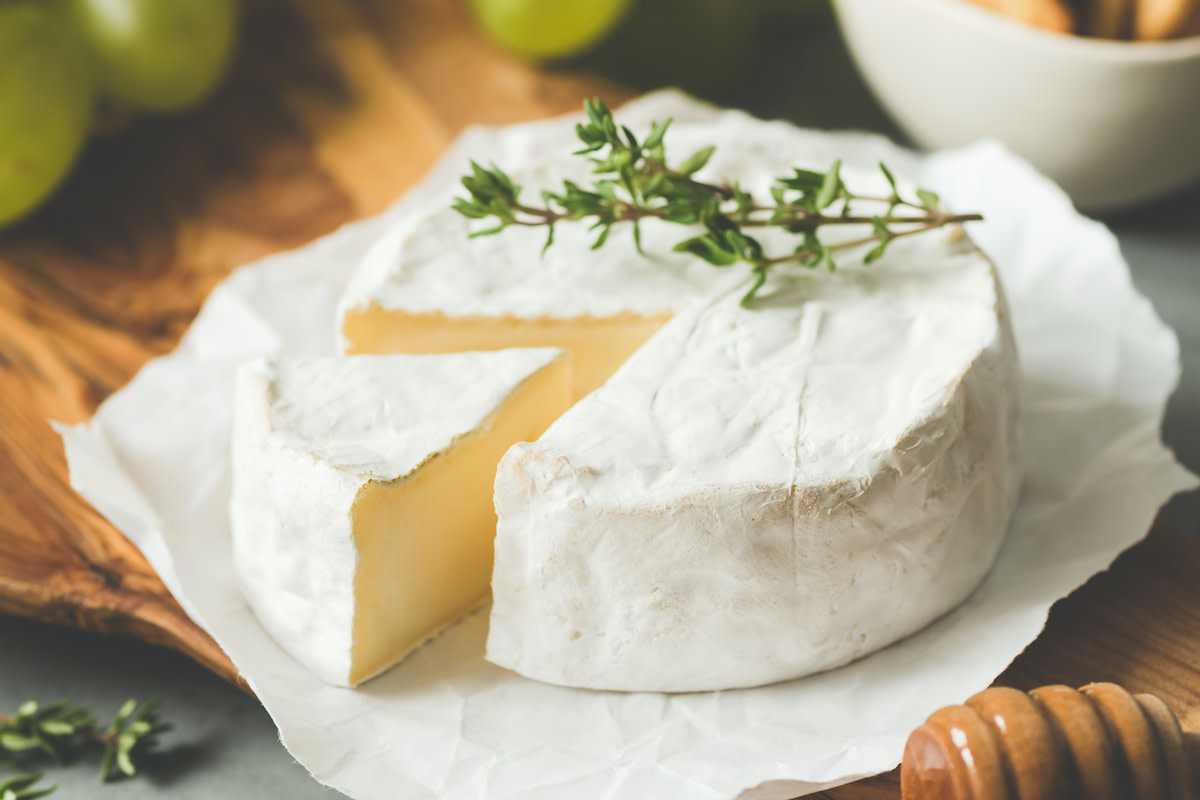Brie Cheese Guide: Uses and Substitutions for Brie
Written by MasterClass
Last updated: Sep 23, 2021 • 3 min read
Brie cheese is one of the world’s most popular cheeses. Find out more about this iconic, gooey wheel, and learn how to serve it.
Learn From the Best
What Is Brie Cheese?
Brie is an off-white, soft cheese with a white rind of Penicillium candidum mold. The popular French cheese has a mild, earthy flavor and creamy, spreadable consistency. The soft cheese has roots in the Middle Ages, and its name derives from the Brie region of France, where it originated (the modern-day Seine-et-Marne). Originally, monks made the cheese in the small commune of Reuil-en-Brie, where it was often known as the “queen’s cheese,” thanks to its popularity among royals.
Brie Varieties
There are many different varieties of Brie cheese, which vary by region in consistency and flavor. Unofficial Brie-style cheeses appear all over the world, from Australia to Brazil. In France, certain Brie cheeses—like Brie de Meaux and Brie de Melun—have appellation d’origine contrôlée (AOC) designations, a certification granted to certain French agricultural products. Modern Brie contains either raw or pasteurized milk; those made with raw milk are generally higher quality, closer to the traditional flavor and characteristics that define the cheese.
How Brie Is Made
Brie is a soft-ripened cheese (also known as a bloomy-rind cheese) that relies on a mold (most often P. candidum) to age it quickly from the outside. As the cheese ripens, the mold enzymes break down the protein structures within, giving it its characteristic soft “ooze.”
For Brie production, cheesemakers heat cow’s milk, then add a bacteria starter and rennet (a mixture of enzymes that thickens milk). The milk coagulates into curds and whey (a milk protein). Next, producers transfer the curds to round molds and spray them with the P. candidum. The wheels then sit in a cool environment for up to six weeks while the white mold develops around the curds. Some Brie cheeses, like Brie noir, age even longer, resulting in a firmer texture, funkier, more intense flavor, and crumbly skin.
3 Uses for Brie Cheese
Like many kinds of cheese, Brie is sufficiently nuanced and flavorful enough to enjoy on its own, but there are many ways to highlight its mild, nutty sweetness. The rind is completely edible and brings both textural contrast and notes of loam and earth, like fresh mushrooms. Here are a few ways to enjoy Brie:
- 1. Baked: Baked Brie features a wheel of Brie encased in puff pastry, baked until the cheese turns runny and the dough is golden brown and crisp. You can add complementary ingredients, like prosciutto or fruit, between the cheese and the crust or aim for a tart and sweet option, like apple chutney, rhubarb jam, mincemeat, or a citrus-cranberry compote. Learn how to make baked Brie.
- 2. On a cheese plate: The simplest way to serve buttery Brie is in small wedges on a cheese board at room temperature, accompanied by other cheeses, hard crackers or crostini, and assorted fruits, nuts, and condiments. Alternatively, serve French Brie as a whole wheel, and allow your guests to serve themselves.
- 3. In a sandwich: Add Brie to ham, chicken, or turkey sandwiches for an indulgent upgrade to the usual deli cheeses. Pair it with a swipe of good, spicy stone-ground mustard and thinly sliced Granny Smith apple, or for a sweeter sandwich, spread fresh baguette with creamed honey or fresh honeycomb and top with slices of Brie.
3 Substitutes for Brie Cheese
If you’re looking for a Brie cheese doppelgänger, here are a few options to try:
- 1. Cambozola: This German hybrid between a French triple-cream soft cheese and gorgonzola, an Italian blue cheese, offers a similarly tender texture to Brie, with more complex, sharp flavor notes from the blue-hued Penicillium.
- 2. Camembert: Brie is milder than Camembert, which has a notoriously sharp flavor and aroma. You’ll also find Camembert wheels for sale, encased in the same, off-white rind. Learn more about the differences between Brie and Camembert.
- 3. Fromage d’affinois: This double-cream soft cheese is similar to Brie in most aspects, save for one: The extra filtration step, which removes most of the water from the milk before coagulation, results in a richer, creamier cheese.
How to Store Brie
To store Brie, wrap it in plastic wrap and seal it in an airtight container. Keep the cheese in the refrigerator between uses. Brie does not have a long shelf life: Once cut, consume within five days for best flavor and texture.
Want to Learn More About Cooking?
Become a better chef with the MasterClass Annual Membership. Gain access to exclusive video lessons taught by the world’s best, including Gordon Ramsay, Gabriela Cámara, Chef Thomas Keller, Dominique Ansel, Yotam Ottolenghi, Alice Waters, and more.
